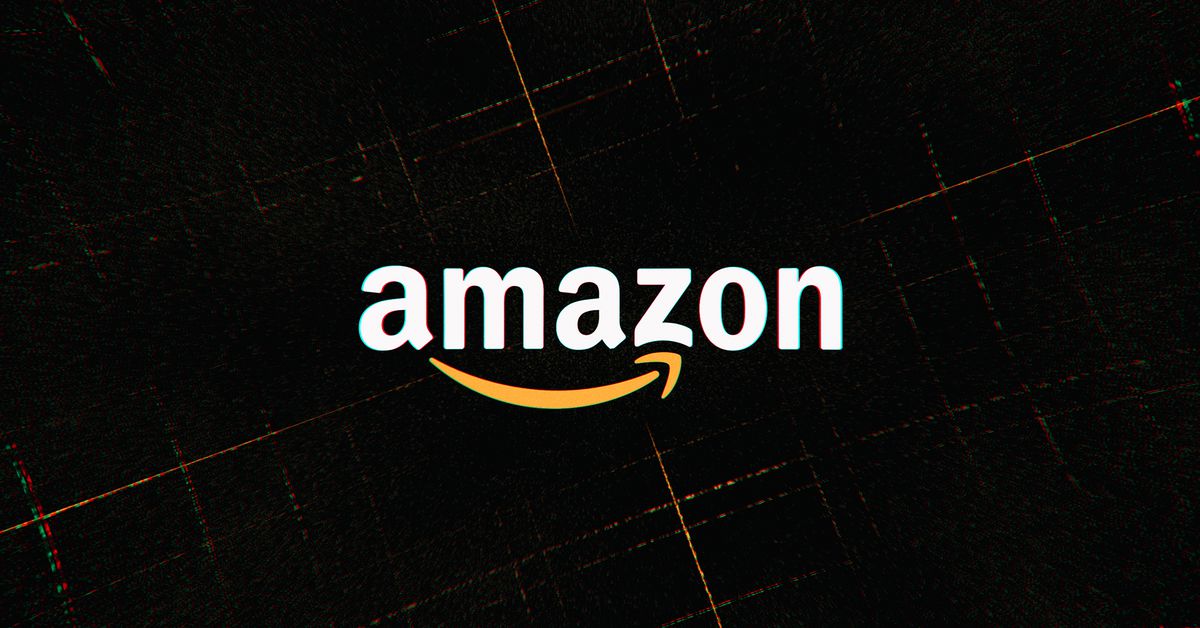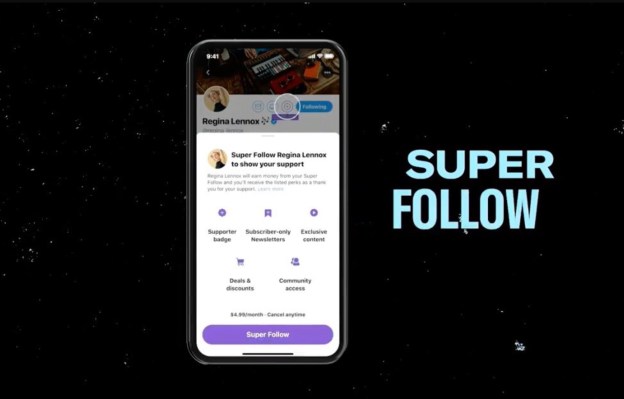The best alternatives to Spotify for listening to music
Image: Getty ImagesWhen this article was originally written in February 2022, the big Spotify controversy was that artists were abandoning the audio service in protest of the company’s contract with podcaster Joe Rogan, and some subscribers were deciding to...
/cdn.vox-cdn.com/uploads/chorus_asset/file/23954050/STK427_Getty_Headphones.jpg)
When this article was originally written in February 2022, the big Spotify controversy was that artists were abandoning the audio service in protest of the company’s contract with podcaster Joe Rogan, and some subscribers were deciding to follow the musicians’ example. More recently, the issue that has users irritated is the continued lack of HiFi and the layoffs that have made music discovery even harder.
Although Spotify is probably the best-known music service, there are quite a few alternatives available for good music listening. If you’re someone who has decided to explore what music services are out there, here’s a quick rundown of some of the possibilities. But in the interest of being complete, we will start with Spotify itself.
Screenshot by Barbara Krasnoff / The Verge
Spotify has been undergoing a lot of changes lately, laying off about 1,500 people, putting its podcasting service front and center, and succeeding (to an extent) in its 2019 complaint with the European Commission against Apple’s music app practices. Does this result in a better product? It depends on who you talk to.
Spotify’s free service offers a wide selection of music interrupted fairly frequently with advertisements. While you can specify songs, albums, or podcasts directly using the app, you have less choice as to what you want in your listening queue. (For example, if I request a specific artist using Google Assistant or Alexa, I’ll invariably be led to the artist’s “radio.”)
Spotify Premium starts with its Individual ($10.99 / month) account, which offers ad-free listening, the ability to download songs and organize your queue, and up to 15 hours of audiobook listening. You can also get the same features for two people with Premium Duo ($14.99 / month) and up to six people or kids with Premium Family ($16.99 / month), which adds the ability to block explicit music.
Budget plans: Premium Student ($5.99 / month), for verified students, adds access to Hulu.
Free trial: You get a one-month free trial.
Screenshot by Barbara Krasnoff / The Verge
Along with Apple Music and Google’s YouTube Music, Amazon Music is one of the most well-known services outside of Spotify. It offers three different music tiers; as you travel up the ladder, you get access to more songs at higher levels of quality. You can also listen to podcasts.
Amazon Music Free allows you access to the service’s playlists, radio stations, and podcasts, but audio quality is limited to SD, there are ads, and you can’t select specific songs or albums.
Amazon Music Prime is free to members of its Prime shopping, video, etc. service (but not to family members — it’s one of the few features that is not shared). It is also SD only, but it is ad-free and lets you select specific songs.
Amazon Music Unlimited lets you have ad-free access to songs in SD, HD, Ultra HD, and spatial audio. The Individual Plan ($999 / month) only lets you listen on one device at a time; the Family Plan ($16.99 / month) lets you have up to six accounts used on several devices.
Budget plans: The Single Device Plan ($5.99 / month) lets you use the service on a specific Echo or Fire device, and the Student Plan ($5.99 / month) gives you HD access and many of Unlimited’s features.
Free trial: All plans offer a 30-day free trial.
Screenshot by Barbara Krasnoff / The Verge
Apple Music is a good option, especially for those who already have a buy-in to the Apple ecosystem. It touts its higher-quality audio, including “immersive sound with dynamic head tracking” for those with AirPods. You can also download and stream music to your Apple Watch. Other features include a lyrics view so you can follow along, curated lists, and live radio stations.
There is no free version; you’ll have to go to a separate app for podcasts.
Apple Music Individual ($10.99 / month) is the standard plan; besides access to Apple’s music library and playlists, it can be used with a variety of devices and offers high-quality audio, including lossless audio and spatial audio with Dolby Atmos. You can request specific songs or albums by asking Siri; you can also download music and see lyrics. A Family plan ($16.99 / month) provides the Individual features for up to six people.
Budget plans: If you’re in college, the Student plan ($5.99 / month) offers the same features as the Individual plan. You can also include Apple Music in the Apple One bundle plan.
Free trials: One-month free trial for all plans.
Screenshot by Barbara Krasnoff / The Verge
When we first published this roundup, several people recommended that we also include Bandcamp, and it’s easy to see why. Bandcamp calls itself an “online record store and music community” in which independent musicians and podcasters are paid directly by their fans. According to Bandcamp, the artists collect an average of 80 to 85 percent of each sale (except for Bandcamp Fridays, the first Friday of each month, when the company waives its revenue share, which started in March 2020 to make up for the lack of live performances during the covid pandemic). There is no fee for the service itself; you listen to featured tracks by artists and then purchase the digital or physical albums of your favorites. There are also live “listening party” events.
As mentioned, Bandcamp itself is free; you purchase the music separately for varying prices set by the artists.
Free trials: N/A.
Screenshot by Barbara Krasnoff / The Verge
Deezer is not as well known in the US as Apple Music or Spotify, but it has similar catalogs and features. It offers an impressive variety of songs, playlists, podcasts, and radio channels. You can use its web version or one of the apps it has for almost any device out there, including desktops, phones, and watches. It also offers on-screen lyrics. Like the others, it offers several plans.
Free lets you listen to playlists rather than specific songs and inserts ads.
Premium ($11.99 / month or $107.99 / year) removes the ads, lets you listen to specific tracks, offers high-fidelity sound, and lets you download your music. You can connect up to three devices to your account.
Duo ($15.99 / month or $174.99 / year) has all the features of the Premium plan for two individual accounts; you can connect up to five devices.
Family: Family ($19.99 / month or $218.99 / year) offers six individual Premium accounts and the ability to connect up to 13 different devices. Kid profiles let you control what your child is listening to.
Budget plans: You can get a student discount on the Premium plan for $5.99 / month.
Free trials: One month for all paid plans.
Screenshot by Barbara Krasnoff / The Verge
Pandora is one of the grandparents of music services and was one of the first to offer playlists developed by a listener’s preferences. Currently owned by SiriusXM, it was introduced as a consumer music service in 2005 and has gone through a variety of changes since. (For example, users of the free service were originally limited to 40 hours of streaming per month.) These days, it has one free and two paid services; it includes both music and podcasts.
Interestingly, Pandora’s Free service does allow you to play specific songs and albums as long as you view an ad first; you can also view an ad for unlimited skips.
Pandora Plus ($4.99 / month) removes the ads for unlimited skips and lets you listen offline, but you still have to view an ad to select specific tracks.
Pandora Premium ($9.99 / month) gives you all of the Plus features, removes all advertising, and lets you make and share playlists.
Budget plans: The Family plan ($14.99 / month) includes six accounts. Both Premium Student ($4.99 / month) and Premium Military ($7.99 / month) give you the same features as the regular Premium account.
Free trial: 30 days for Plus and 60 days for Premium.
Screenshot by Barbara Krasnoff / The Verge
Tidal presents itself as the music service for true music fans, with an emphasis on innovation and high-quality audio. It offers a library of over 100 million tracks, over 650 thousand videos, interviews with and documentaries about its artists, and three levels of audio quality: Max (up to 24-bit, 192kHz), High (up to 16-bit, 44.1kHz), and Low (up to 320kbps), depending on your plan and your device; it specifically supports a number of device manufacturers. It does not offer podcasts or a free plan.
HiFi ($10.99 / month) provides HiFi audio quality, no ads, and offline listening.
HiFi Plus ($19.99 / month) adds hi-res FLAC along with Dolby Atmos and Sony 360 Reality Audio.
Budget plans: Both the HiFi and HiFi Plus offer discounted plans. They include a Family plan for up to six users ($16.99 for HiFi / $29.99 for HiFi Plus); a Student plan ($4.99 for HiFi / $9.99 for HiFi Plus); a First Responder plan ($5.99 for HiFi / $11.99 for HiFi Plus), and a Military plan ($5.99 for HiFi / $11.99 for HiFi Plus).
Free trial: A 30-day free trial.
Like Apple Music and Tidal, Qubuz does not have a free service. Like Tidal, the emphasis here is on quality music, with hi-res audio; it has partnered with a variety of equipment manufacturers such as Bang & Olufsen, Sonos, and Thiel. Besides music, it offers album reviews and artist bios. Qobuz offers two plans; each of these comes in Solo (one account), Duo (two accounts living at the same address), and Family (six accounts per household) versions.
Studio provides downloadable music and original editorial content, such as playlists and articles. Solo costs $10.83 / month; Duo costs $14.99 / month; Family costs $17.99 / month.
Sublime lets you specify albums and offers a 60 percent discount on purchases. Solo costs $14.99 / month; Duo is $17.99 / month or $179.88 / year; Family is also $17.99 / month.
Free trial: One month.
Screenshot by Barbara Krasnoff / The Verge
Google chose a few years ago to subsume its independent Google Play Music service into its YouTube video service, coming up with YouTube Music. As of April 2nd, it’s also getting rid of its Google Podcasts app and folding it into YouTube Music.
The Free service includes choice of individual songs and albums along with ads. If you’re listening on a phone, the music will stop if your screen goes dark or you switch apps.
Music Premium ($10.99 / month) gets rid of the ads and the pauses and lets you download your music. There is also a $109.99 annual plan. If you subscribe to YouTube Premium ($13.99 / month), YouTube Music is included.
Budget plans: The Family plan ($16.99 / month) lets you add up to five other household family members aged 13 and up. The Student plan ($5.49 / month) gives you Premium service with verification of eligibility.
Free trial: One month for the Student plan.
SoundCloud.
SoundCloud has been around since 2007 and encourages its members to upload tracks, create playlists, and actively comment — which they enthusiastically do. Currently, the service seems to be up for sale. (It won’t be the first time; both Spotify and Twitter were once said to be interested, but both deals fell through.) How that will affect SoundCloud’s loyal user base is yet to be seen.
The Free service allows access to a variety of tracks and playlists, with ads.
SoundCloud Go ($4.99 / month) eliminates the ads and allows offline listening.
SoundCloud Go Plus ($9.99 / month) adds access to the service’s full catalog and higher quality audio.
Budget plans: SoundCloud Go Plus for students costs $4.99 / month after a 30-day trial.
Free trial: Seven days for SoundCloud Go, 30 days for SoundCloud Go Plus.
Update February 28th, 2024, 8:34AM: This was originally written on February 1st, 2022. All entries have been updated, and entries for Spotify and SoundCloud have been added.

 MikeTyes
MikeTyes 































